“When Martin Viera's Chevrolet rolled out of the dealer's lot, Harry Truman was president of the United States, gasoline cost 27 cents a gallon and a 24-year-old lefty named Tommy Lasorda was pitching for Almendares in the Cuban winter baseball league. That world is long gone, but the Chevy's still running on the streets of Havana – part of a fleet of classic cars that have become an icon of tourism in the socialist nation. For decades, the cars slowly decayed. But officials in recent years have eased state control over the economy by allowing limited self-employment. So those lucky enough to have a pre-revolutionary car can earn money legally by ferrying tourists – or Cubans celebrating weddings – along Havana's waterfront Malecon boulevard. Viera's 1951 Chevrolet and Osmani Rodriguez's 1954 Ford are now part of Havana's tourist draw”. – The Associated Press
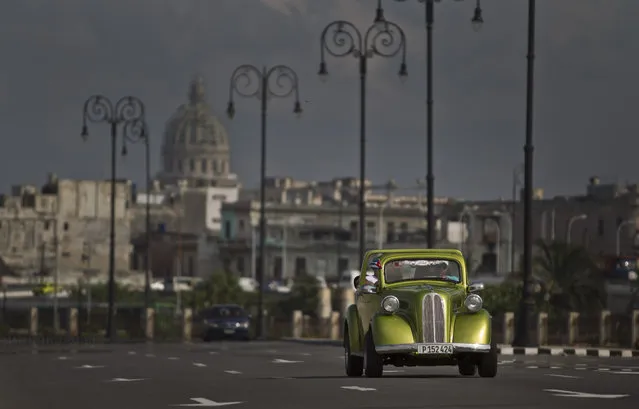
In this October 15, 2014 photo, a man drives a classic American car on The Malecon in Havana, Cuba. This classic still running on the streets of Havana is part of a fleet of classic cars that have become an icon of tourism in the socialist nation. (Photo by Franklin Reyes/AP Photo)
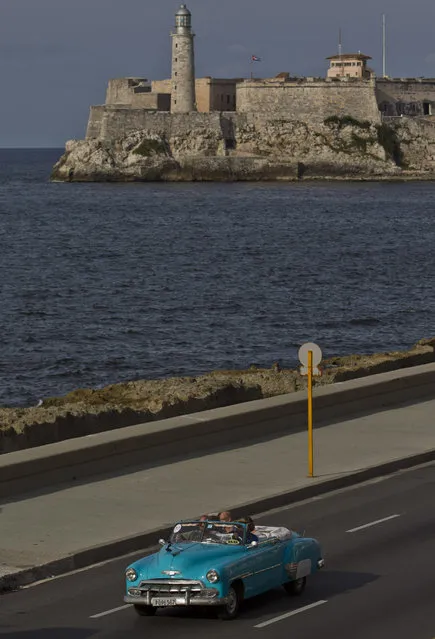
In this October 15, 2014 photo, tourists ride in a classic American car on the Malecon in Havana, Cuba. Officials in recent years have eased state control over the economy by allowing limited self-employment. So those lucky enough to have a pre-revolutionary car can earn money legally by ferrying tourists – or Cubans celebrating weddings – along Havana's waterfront Malecon boulevard. (Photo by Franklin Reyes/AP Photo)
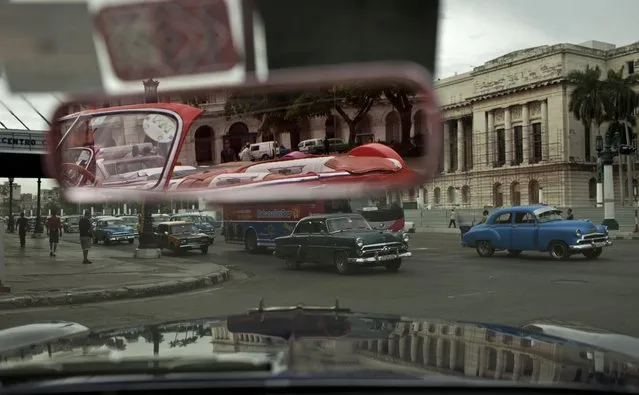
In this October 16, 2014 photo, people drive classic American car in Old Havana, Cuba. These classic cars are now part of Havana's tourist draw. That's allowed many to paint and polish their aging vehicles. (Photo by Franklin Reyes/AP Photo)
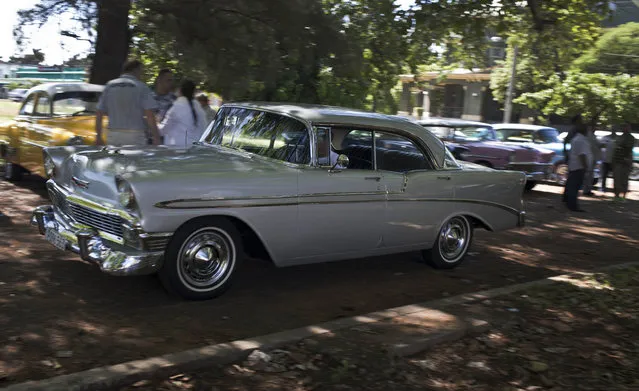
In this October 17, 2014 photo, a man drives a classic American car after exhibition of antique classic cars in Havana, Cuba. While the U.S. embargo that took effect in 1961 stopped the flow of new cars, and most parts, a few Cubans now manage to bring in replacement parts when friends or family visit from the U.S. (Photo by Franklin Reyes/AP Photo)

In this October 16, 2014 photo, men repair coil spring of a classic American car in Havana, Cuba. The cars may gleam on the outside, but they're often battered, rolling monuments to ingenuity within. People fabricate parts in crude workshops. (Photo by Franklin Reyes/AP Photo)
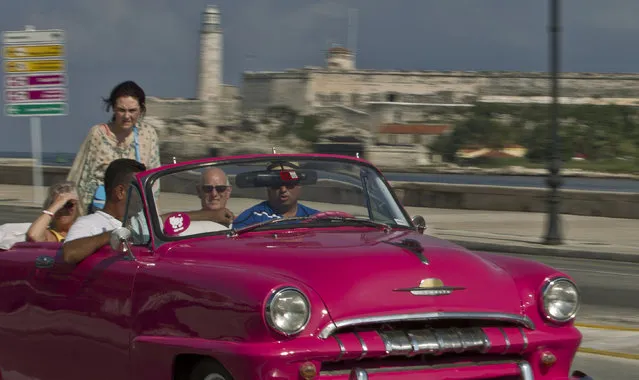
In this October 15, 2014 photo, tourists ride in a classic American car on the Malecon in Havana, Cuba. Those lucky enough to have a pre-revolutionary car can earn money legally by ferrying tourists – or Cubans celebrating weddings – along Havana's waterfront Malecon boulevard. (Photo by Franklin Reyes/AP Photo)
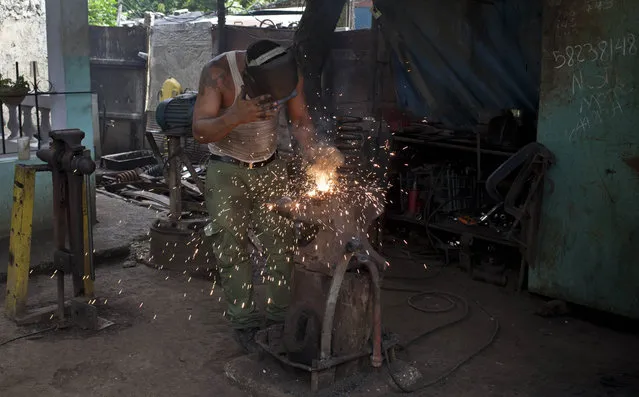
In this October 16, 2014 photo, Yoandi Failu, 34, repairs coil spring of a classic American car in Havana, Cuba. Failu fabricates parts in crude workshops. Many scavenge parts, particularly engines, from Soviet-era cars and trucks. (Photo by Franklin Reyes/AP Photo)
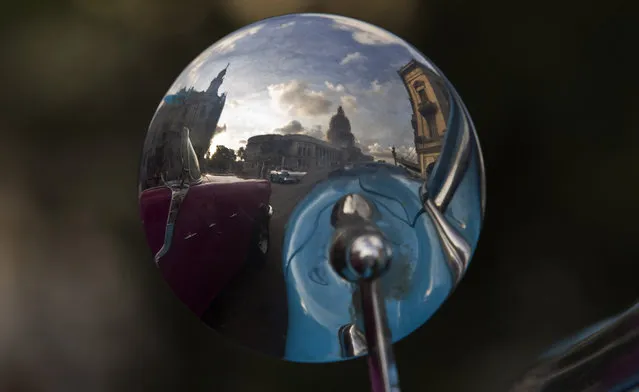
In this October 15, 2014 photo, American classic cars is reflected in a mirror in Havana, Cuba. The cars may gleam on the outside, but they're often battered, rolling monuments to ingenuity within. Many scavenge parts, particularly engines, from Soviet-era cars and trucks. (Photo by Franklin Reyes/AP Photo)
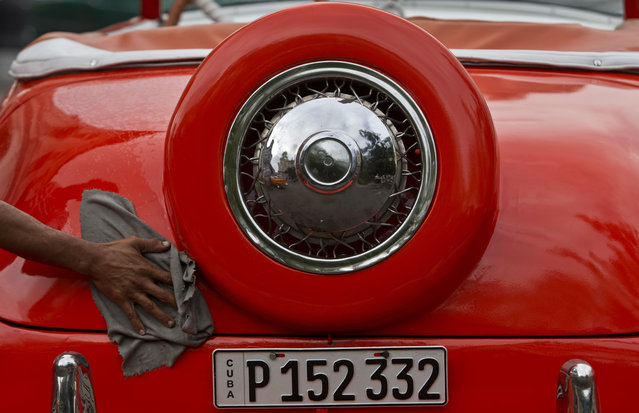
In this October 16, 2014 photo, a man cleans his American classic car before going to work in Havana, Cuba. While the U.S. embargo that took effect in 1961 stopped the flow of new cars, and most parts, a few Cubans now manage to bring in replacement parts when friends or family visit from the U.S. (Photo by Franklin Reyes/AP Photo)
20 Oct 2014 09:01:00,
post received
0 comments
